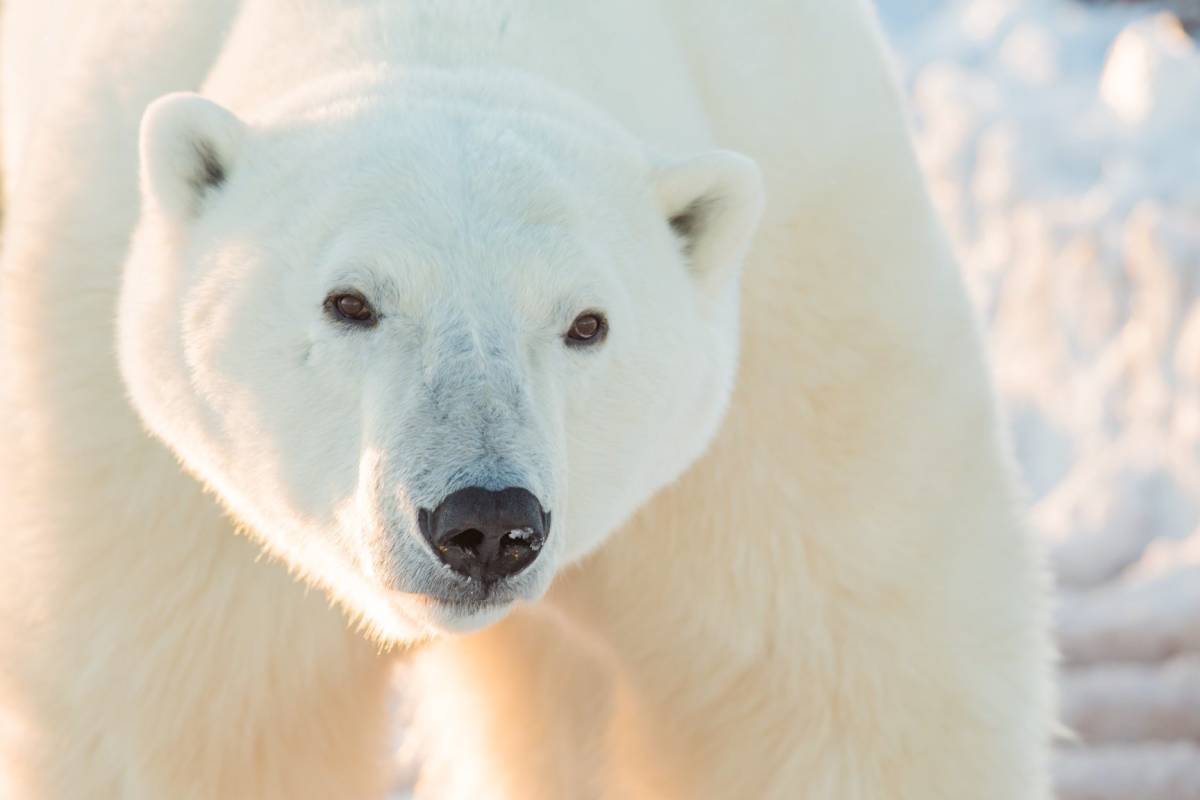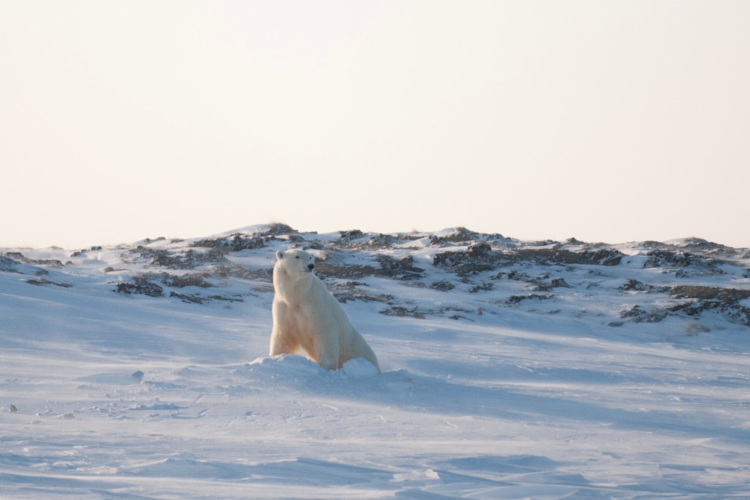Polar Bear Questions
I recently received this intriguing question from Barbara: “I’ve read that the polar bear’s diet is extremely high in fat. How can the bears eat so much fat and stay healthy, with no heart problems?”
From birth to old age, the life of a polar bear—and indeed most of the Arctic food chain—revolves around fat. During the months when prey is plenty (in spring especially), polar bears build up their adipose (fat) tissue stores, using these reserves as energy during the summer and winter months when food is scarce.
For polar bears, the fat stores they accumulate around their rump and stomach are primarily build on the blubber of the ringed and bearded seals they manage to catch from the sea ice platform. One of the factors that help the bears build up these fat stores as quickly as possible is their ability to assimilate a whopping 97% of the energy available in the seal blubber they ingest.
For any human, this fatty diet begs the question: How do polar bears, who often carry sky-high levels of cholesterol and other fats in their blood, and whose body weight in a good year can consist of 50% fat, avoid cardiovascular issues? How do their heart and blood vessels deal with this extreme high-fat diet?
DNA clues
Two research studies provide some insight, one by Liu et al. (2014) and the other by Castruita et al. (2020). Liu and co-authors analyzed the genome from 79 polar bears from Greenland and 10 brown bears from mainland North America, coastal North America, and Fennoscandia. By comparing the length of DNA segments shared by these polar bears and brown bears, they inferred that the two species diverged less than 500,000 years ago. (This result stands in contrast to a previous study, which found the point of divergence to have happened up to 5 million years ago. However, polar bears and brown bears have been hybridizing on and off in different geographical areas of the Arctic since they first split into two species, which complicates the question. The last word about the exact time of origin of the polar bear has probably not been written yet!)
Taking a deeper dive into the polar bear genome, Liu et al. found the clearest signal of evolutionary selection—the biggest differences between the brown bear genome and the polar bear genome—involved genes related to cardiovascular function, lipid metabolism, adipose tissue development, and heart function (as well as fur pigmentation!).
One of the genes showing the strongest evidence of selection was the one named APOB, which in humans is known to play a role in moving cholesterol and other lipids from the bloodstream into the cells, thereby reducing the risk of blood clots and heart disease. In other words, the study found genetic mutations that evolved rapidly (in evolutionary terms) in polar bears after they split off from brown bears provided them with the ability to consume a fatty diet without developing high rates of heart disease.
Shared ancestry
The second, more recent study by Castruita et al. (2020) took a closer look at these genetic changes and found that they derived primarily from mutations that occurred in the polar bear lineage after they split from brown bears. However, in the specific genes they assessed, there was one that included some variation that already existed in the
so-called ancestral gene pool. This is perhaps not a great surprise, as, in this paper, the ancestral gene pool consisted of samples from the population of brown bears residing in Southeast Alaska on the Admiralty, Baranof, and Chichagof islands (also known as the ABC Islands), which has long been known to be one of the areas that has had a high hybridization rate between brown bears and polar bears at the end of the last ice age.
Polar bear evolution can be messy and complicated at times, but one thing’s for sure: These bears have evolved superbly to eke out a living on the Arctic sea ice and to stuff their magnificent faces with as much seal blubber as they can lay their paws on—without having to worry about their cardiovascular health!
Dr. Thea Bechshøft is a staff scientist with Polar Bears International, based in Aarhus, Denmark. Follow her popular Polar Bear Questions series on Facebook and Instagram—and ask a question of your own!
References:
Castruita et al. 2020. Analyses of key genes involved in
Arctic adaptation in polar bears suggest selection on both standing variation
and de novo mutations played an important role. BMC Genomics, 21:
543
Liu et al. 2014. Population genomics reveal recent
speciation and rapid evolutionary adaptation in polar bears. Cell,
157: 785-794

















